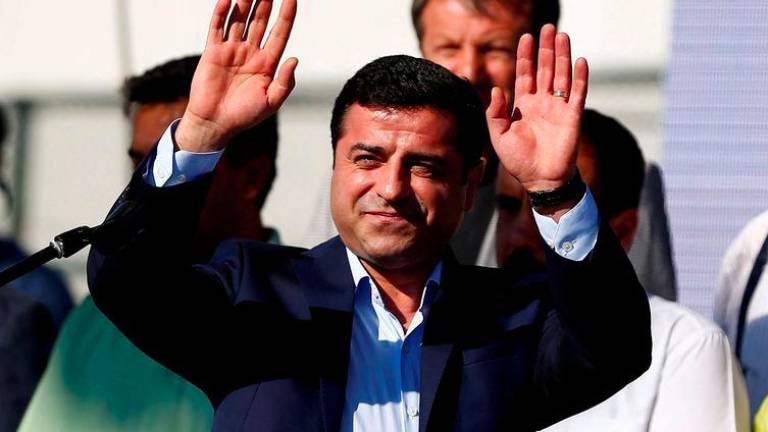THE issue of substance abuse among teenagers has become a pressing concern, negatively impacting communities worldwide.
It refers to the harmful or hazardous use of psychoactive substances, including alcohol, tobacco, nicotine and illicit drugs. This problem may stem from various factors, such as the fear of missing out, curiosity and societal influence, among others.
In severe cases, persistent abuse in teenagers can lead to addiction.
According to the World Health Organisation, approximately 155 million teenagers globally or more than 25% of the population between the ages of 15 and 19 consume alcohol.
In Malaysia, the 2022 National Health and Morbidity Survey conducted by the Health Ministry revealed that three out of four (75%) teenagers aged 13 to 17 have experimented with drugs. Of these, 18.6% acknowledged consuming alcohol at some stage in their lives, with 64.6% doing so before reaching the age of 14.
In 2023, reports indicated that over 137,000 individuals were grappling with drug addiction, with youths and teenagers accounting for 65% (73,769) of the total.
It is apparent that substance abuse not only jeopardises the physical and mental health of teenagers but casts a shadow on their educational pursuits, familial bonds and overall societal contributions.
Teenage substance abuse often extends beyond experimental or occasional usage, evolving into a detrimental pattern of misuse that disrupts normal daily functioning, relationships and personal development.
The issue transcends data and statistics, unfolding into a compelling narrative about the obstacles young people face while navigating a world filled with influences that can jeopardise their promising futures.
Battle against easy access and availability
Based on a local media report from 2017, students can obtain ice and methamphetamine (meth) for as little as RM10. Given the continuous influx of drugs into Malaysia, it is conceivable that this cost may have further decreased.
A teenager’s propensity for substance abuse is markedly influenced by their environment. Adolescents with easy access to drugs, tobacco and alcohol are at heightened risk of developing an addiction.
Recent actions by the current administration, including providing unrestricted access to tobacco products and dropping the generational end-game (GEG) provision from the anti-smoking Bill, will make it easier for teenagers to access these products. This raises concerns about availability and affordability, creating an environment where adolescents can easily obtain these harmful products.
Furthermore, teenagers, especially those living in high-risk areas with prevalent drug users, are more susceptible to the effects and risks of substance use.
For example, as highlighted in the 2023 Synthetic Drugs in East and Southeast Asia report by the United Nations Office on Drugs and Crime, the Golok River, which borders Kelantan and Narathiwat, has been extensively used by organised crime groups for transporting significant amounts of crystal methamphetamine. This is evidenced by numerous reported cases in 2022 and early 2023.
According to the National Anti-Drugs Agency (Nada), there is a growing concern regarding synthetic drugs, especially in states such as Kedah, Kelantan, Terengganu and Perlis. The geographical proximity of these states to Thailand renders them vulnerable to the impact of the illicit drug trade, with Thailand serving as a principal source and distributor.
Moreover, these states have high rates of unemployment and poverty. The huge demand in Malaysia and affordability of foreign illicit substances have created a scenario where local communities and teenagers are easily enticed. This susceptibility can lead to involvement of teenagers as drug mules or consumption in exchange for additional pocket money.
Family environment and structure
As the primary social unit, families shape teenagers’ attitudes, behaviours and overall well-being. Four key factors – unhealthy family dynamics, parental substance abuse, lack of parental supervision and inconsistent discipline – can contribute to teenagers’ vulnerability to substance abuse.
In contrast to the past, where parents upheld strict rules against substance use, contemporary parenting has shifted towards a more lenient approach.
Some parents now tolerate their children’s actions, even if they are misguided. A recent incident illustrated this shift when a local media reported a father openly supporting his son caught smoking on school premises during the SPM examination.
Socioeconomic inequalities faced by teenagers, although seldom addressed, present a significant risk for substance misuse. Studies indicate that adolescents from socioeconomically disadvantaged households are more prone to experiencing poorer mental health compared with their more affluent counterparts.
Research indicates that the prevalence of cigarette smokers in rural schools is nearly twice as high compared with the prevalence in urban schools.
Furthermore, parental substance abuse is a potent predictor of a teenager’s susceptibility to similar behaviours. Children of parents who misuse substances face an elevated risk of developing substance abuse issues themselves.
A cross-sectional study involving 6,254 teenagers aged 14 to 19 years old found that teenagers with at least one or both parents smoking had a higher risk of smoking than those with neither parent smoking.
The normalisation of substance use within the family may contribute to the notion that it is acceptable, impacting the teenager’s views towards substances.
Intricate effects on physical and mental health
Peer pressure, academic stress and identity issues are among the factors that can contribute to mental health challenges during adolescence, a critical developmental stage characterised by significant cognitive, emotional and physical growth. For example, some teenagers may resort to using substances to find momentary relief from anxiety, depression or trauma as a coping mechanism.
Research conducted among 2,458 teenagers aged 13 to 15 years found that those suffering from a depressive disorder are over five times more likely to smoke.
Moreover, the stigma surrounding mental health issues may dissuade some teenagers from seeking professional assistance, leading them to self-medicate and perpetuate the cycle of substance misuse. Co-occurring disorders, where drug abuse and mental health concerns coexist, pose specific challenges for diagnosis and treatment.
Teenagers involved in substance abuse face a multitude of physical consequences that extend beyond the immediate effects of intoxication.
Substance use can exert a significant toll on teenagers’ physical health, ranging from disrupted sleep patterns to compromised nutritional habits.
In addition to reinforcing GEG, Emir Research recommends the following measures:
Extend the reach of AntiDrugs Skuad initiatives administered by Nada by directing concerted efforts towards rural areas identified as high-risk, intensifying the impact on substance abuse prevention and intervention.
Conduct comprehensive rehabilitation initiatives among teenagers and youths, involving accessible mental health interventions, aiming to address both aspects holistically, for example, nicotine replacement therapy administered in Hong Kong. This will promote healthier coping mechanisms, reduce stigma and promote an environment that supports the overall well-being of teenagers.
Maximise taxation for alcohol, drugs, tobacco and similar products. Higher taxes can lead to price increases, which may discourage youngsters from starting or continuing to consume alcohol and cigarettes, as young people are susceptible to price fluctuations.
Stakeholders should be prepared to implement blockchain technology to reduce the prevalence of smuggling. This will create transparent and tamper-resistant records of transactions, making it more challenging for smugglers or even civil servants to manipulate documentation.
Reinforce border security, especially in high-risk areas such as Sungai Golok, Kelantan and Bukit Kayu Hitam in Kedah. Modernise border infrastructure to streamline legal trade processes, and implement robust monitoring systems to deter illicit activities. In addition, establish mechanisms for anonymous reporting of smuggling activities, with appropriate protection for whistleblowers, as smuggling often involves collusion with civil servants.
The urgency of addressing substance abuse among teenagers lies not only in mitigating its immediate consequences but also in fostering a generation free from addiction, allowing them to realise their full potential.
The writer is a research assistant at Emir Research, an independent think-tank focused on strategic policy recommendations based on rigorous research. Comments: letters@thesundaily.com










